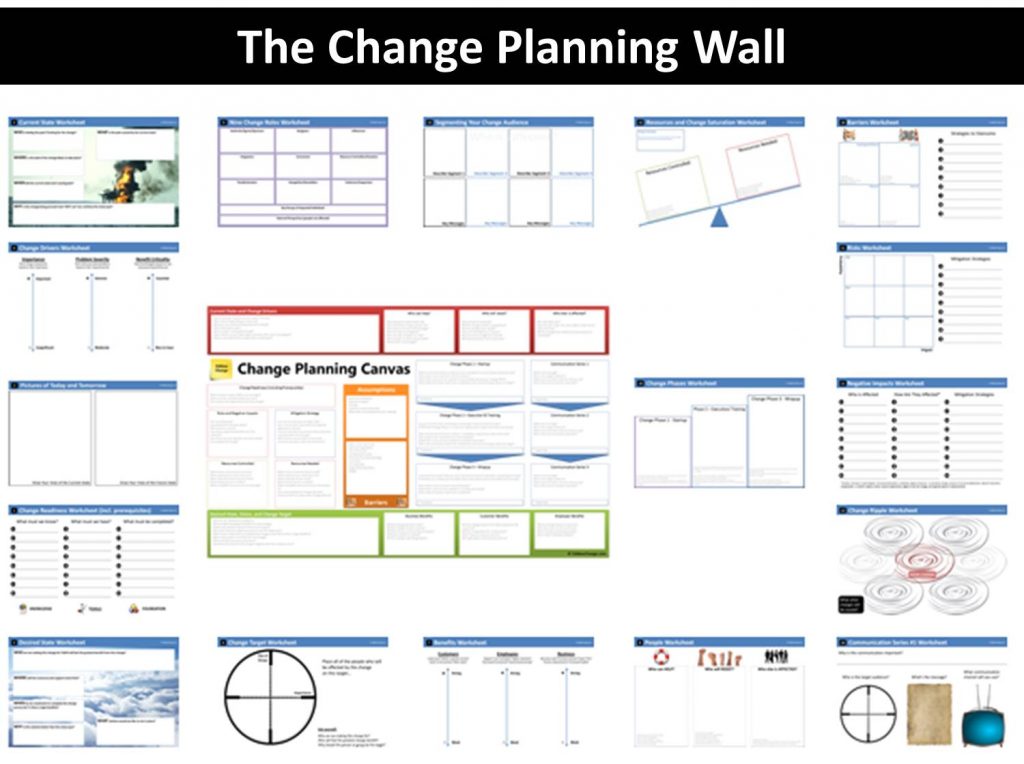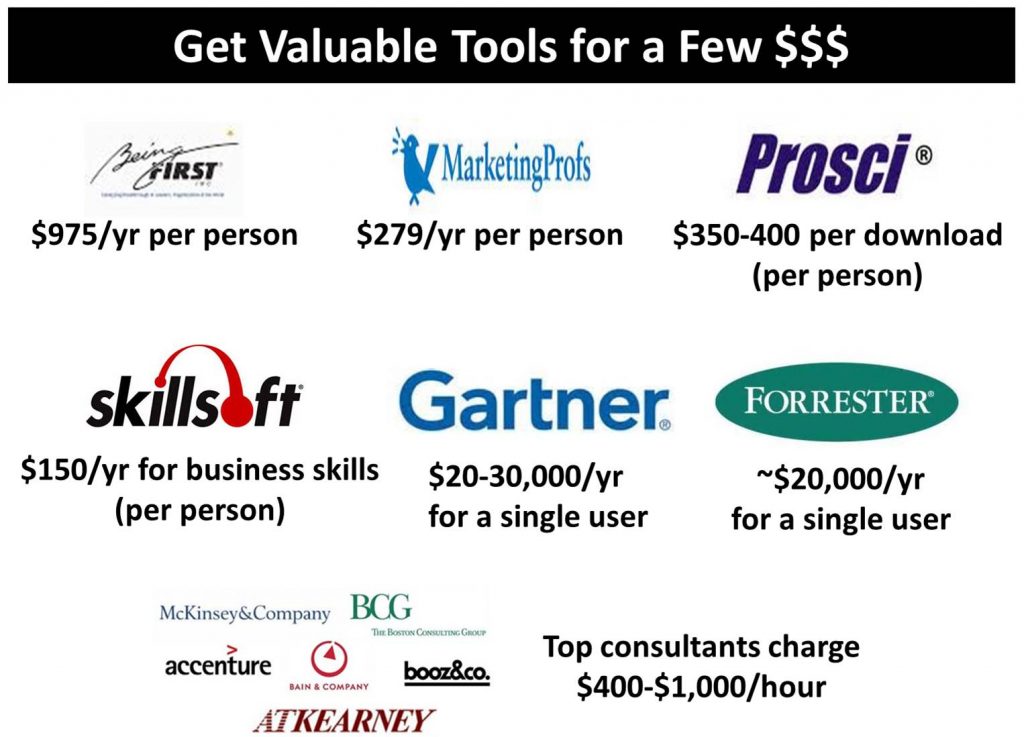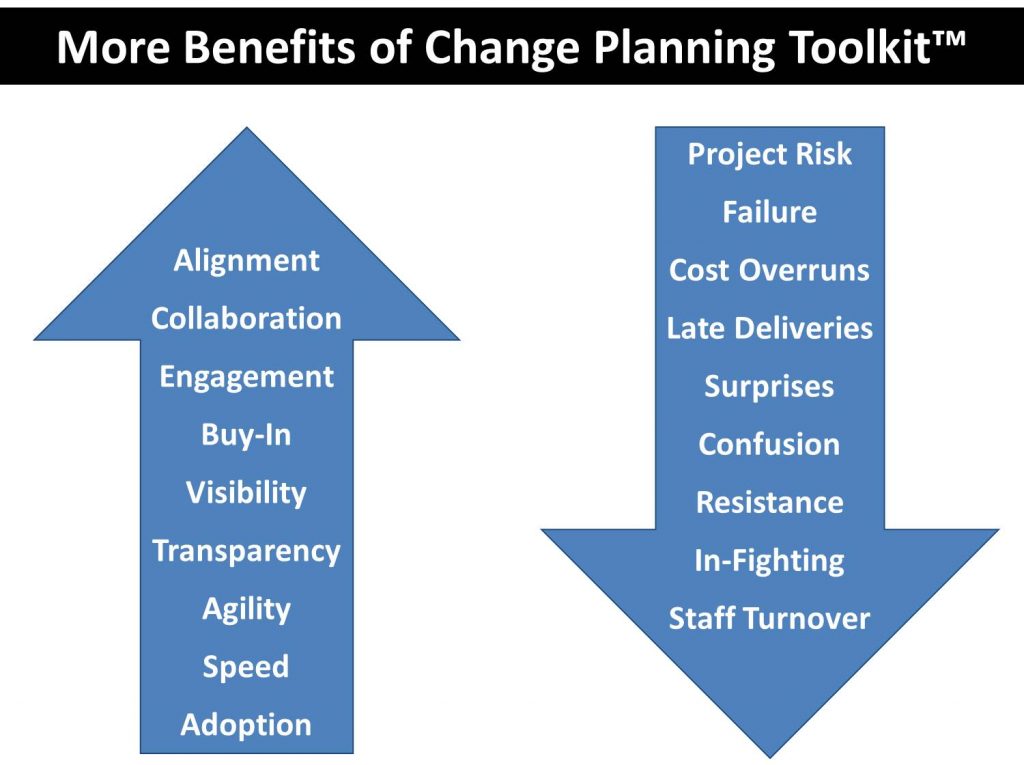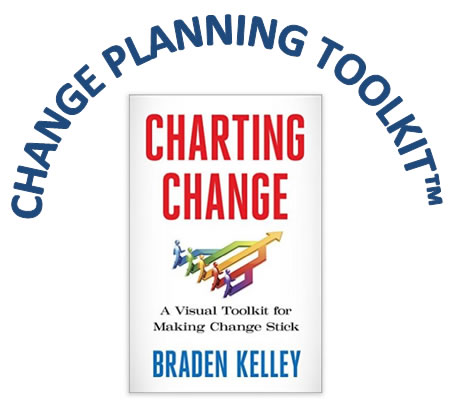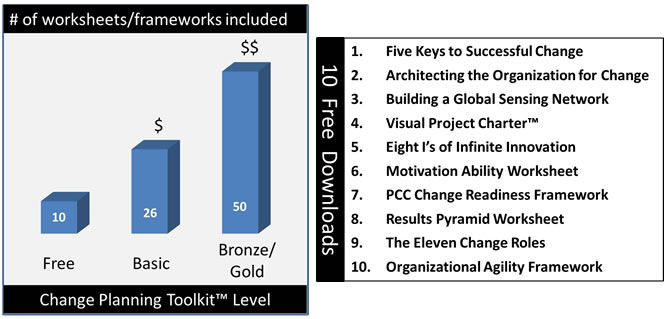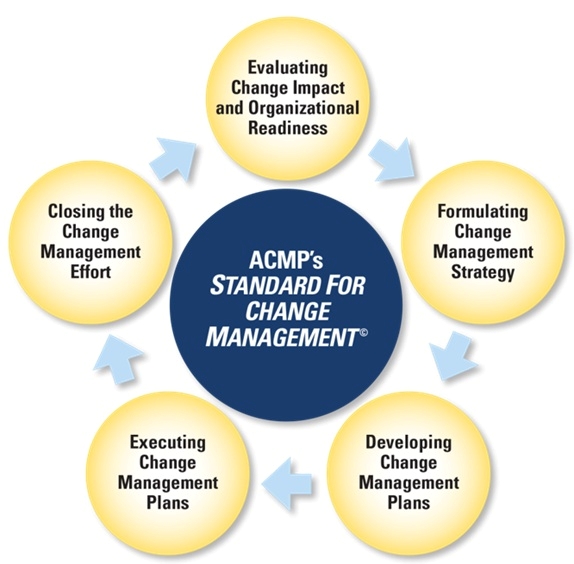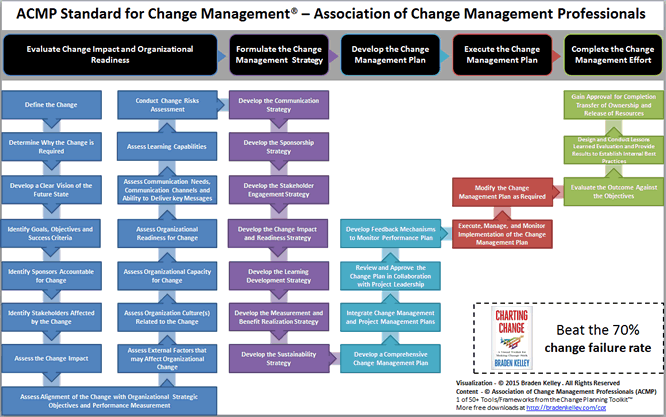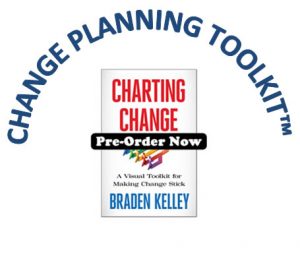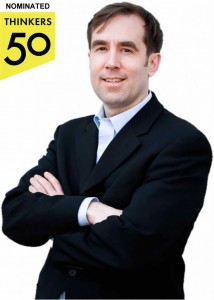 When I first wrote about Building a Global Sensing Network I wrote in the specific context of the war for innovation and the need to make sure you’re fighting it outside your organization — not inside.
When I first wrote about Building a Global Sensing Network I wrote in the specific context of the war for innovation and the need to make sure you’re fighting it outside your organization — not inside.
We looked at how most organizations hire the most clever, educated, experienced and motivated people you could afford and then direct them to come up with the best customer solutions possible, organize and execute their production and marketing predictably and efficiently, and do their best to outmaneuver the competition.
In short, most organizations pursue success by building a fortress from which the organization can defend its intellectual property and its market position utilizing the human resources it can assemble within the castle walls. At the same time most organizations focus on achieving organizational success by achieving the greatest overlap possible between the skills, abilities and talents of each job applicant and the job description for each role.
But most organizations (referred to as Typical Organizations in the graphic below) fail to harness ALL of the skills, abilities and talents of the individuals they have in their organization to achieve greater performance as a collective. In my mind this is painful, wasted human capital – painful for the organization (lost potential revenue and profitability) and painful for the individual (boredom, stress, and disappointment).
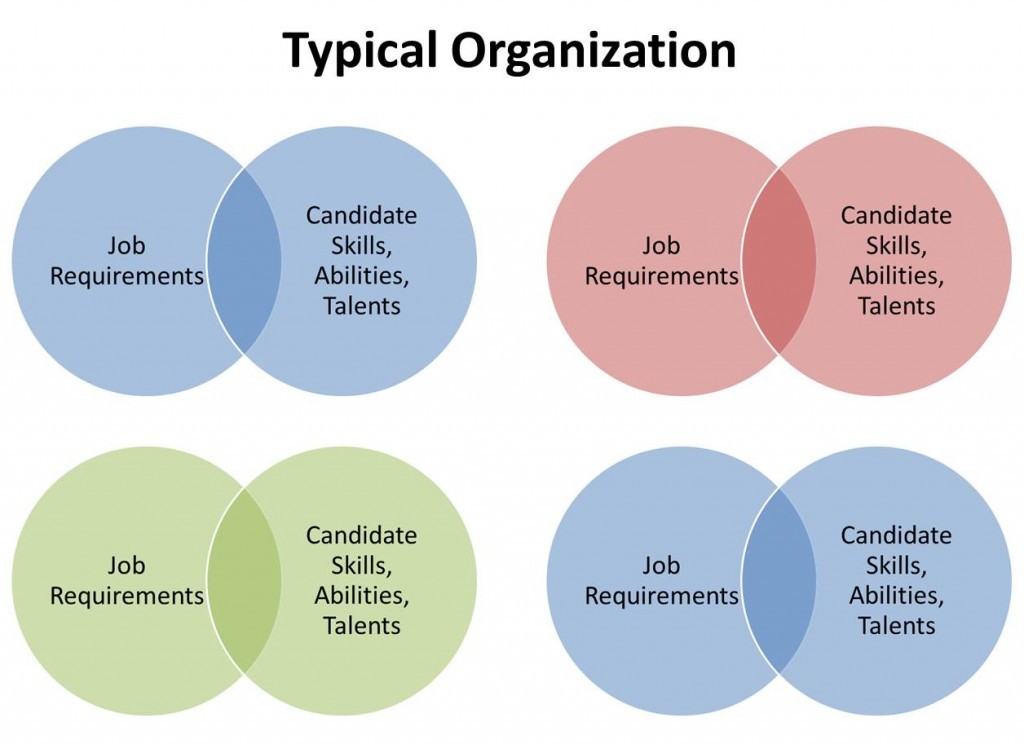
But, a handful of more progressive, innovative organizations are trying to do better to harness the passions AND the skills, abilities, and talents of their individuals to better achieve the collective’s ability to generate revenue and profits (or other appropriate benefits) by engaging their employees in the innovation efforts of the organization, and allowing their employees to take some of their skills, abilities and talents and apply them to help fulfill other job descriptions. This looks something more like this:
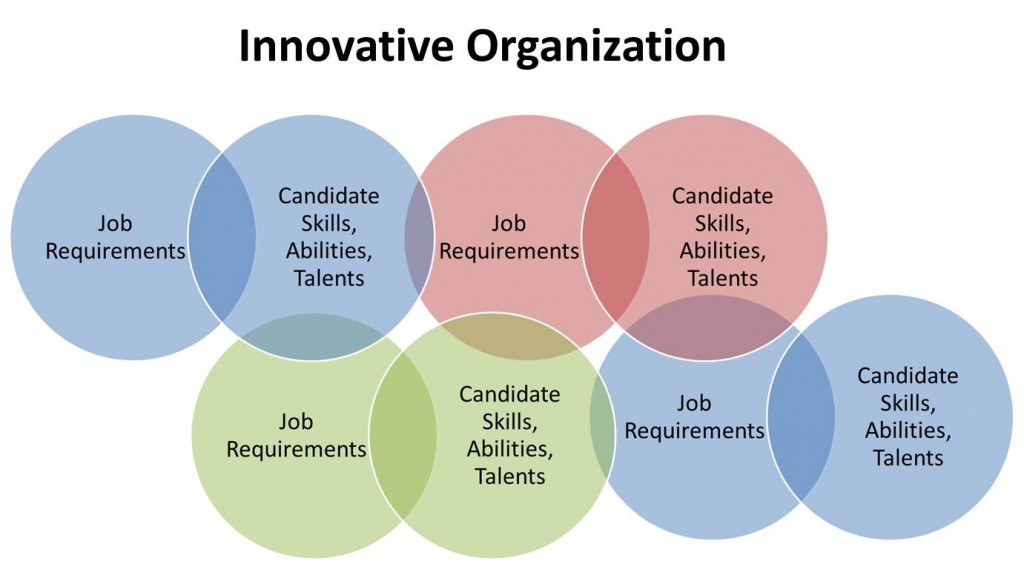
But in the most progressive organizations, they not only provide a way to better harness a more complete set of their employees’ skills, abilities and talents to more than one job description, but they also find a way to harness more of the skills, abilities, and talents that employees are currently realizing outside the organization in their hobbies, volunteer work, or other places.
And the successful organizations of the future will not stop there. They will also harness the connections their employees have outside the organization to increase the innovation capacity of the organization, and better engage not only partners in helping to fulfill the needs of different job descriptions, but they will also even engage their customers in achieving the work of the organization.
Where customer or partner skills, abilities and talents intersect with the job requirements, work can get done, and where customer or partner skills, abilities or talents intersect with employee skills, abilities or talents intersect, communities and connections have the chance to form and be nurtured. This is what organizations of the future will look like:

In this scenario, where innovative organizations begin to move beyond better harnessing the internal innovation capacity of their employees, to also harnessing the external capacity to work (and to innovate) of individuals outside of the organization (and to expand the scope of the collective), and to attract partners and customers to participate, organizations that allow and even encourage employees to develop a personal brand and greater external connections, will claim an outsized share of the potential benefits to both the mission of the organization and to its innovation efforts.
If your employees lack the external exposure, the external connections, and the external personal brand equity and awareness, how much harder will it be for your organization to:
- Attract the best partners to your innovation efforts
- Recruit the best customers to co-create with you
- Build a strong pipeline of potential future internal talent
Through this lens you can see that in the future, successful innovation and change will be determined not just by how strong the brand of your organization is (or the collective), but also will be shaped by the strength of the personal brands of the collective’s component individuals.
As the commercial battlefield continues to change, future business success will be built upon more fluid boundaries and the ability to leverage skills, abilities and talents of people and other organizations outside the company and also the ability to:
- Utilize expert communities.
- Identify and gather technology trend information, customer insights and local social mutations from around the globe.
- Mobilize the organization in organic ways to utilize resources and information often beyond its control.
- Still organize and execute production and marketing predictably and efficiently in the middle of all this complexity.
Market leaders in our evolving reality will be increasingly determined not by an organization’s ability to outmaneuver the competition in a known market, but by their ability to identify and solve for the key unknowns in markets that will continue to become more global and less defined. Future market leaders will be those organizations that build superior global sensing networks and do a better job at making sense of the inputs from these networks to select the optimal actionable insights to drive innovation and change.
By this point, hopefully you are asking yourself three questions:
1. How do I create more fluid boundaries in my organization?
2. What does a global sensing network look like?
3. How do I build one?
One View of a Global Sensing Network
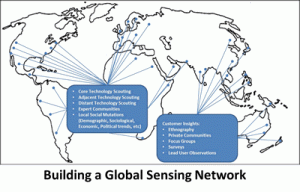 The purpose of a global sensing network is to allow an organization to collect and connect the partial insights and ideas that will form the basis of the organization’s next generation of customer solutions. This involves collecting and connecting:
The purpose of a global sensing network is to allow an organization to collect and connect the partial insights and ideas that will form the basis of the organization’s next generation of customer solutions. This involves collecting and connecting:
Click to access this framework as a scalable 11″x17″ PDF download
1. Customer Insights
- Ethnography
- Private Communities
- Focus Groups
- Surveys
- Lead User Observation
2. Core Technology Trends
3. Adjacent Technology Trends
4. Distant technology trends
5. Local social mutations
- Demographic trends
- Sociological trends
- Economic trends
- Political trends (including regulation)
- Behavioral trends
6. Expert Communities
- University Research
- Government Research
- Corporate Research
- Charitable Research
- Hobbyists
To actually build a global sensing network you need to start from the inside out. You have to take a look around inside your organization and see what employees you have, what natural connections they have, and where they are currently located on the globe. At the same time you need to understand how employees in your organization naturally connect with each other and define what core, adjacent and distant technologies mean in the context of your organization. You must also look and see what tools you have inside the organization for managing insights, expertise and information within the organization, and what expert communities you may already have connections into.
I would recommend beginning to establish your global sensing network inside your organization before venturing to build it out completely with the resources and connections that you will naturally need outside your organization. This will enable you to get some really great feedback from employees on the connections that will be necessary to foster and manage outside of your organization and to prepare your information sharing systems and internal communications to enable increased sharing and improved innovation inputs and outputs.

It is likely that many organizations will already be gathering some level of customer insight information from ethnography, private communities, focus groups, surveys, lead user observation, etc. but not have a good infrastructure, policies or procedures in place for sharing this information. If you’re truly serious about creating a deep innovation capability and working to achieve innovation excellence in the same way that you pursue operational excellence, you should experiment with your systems by making customer information more available.
Next, you should leverage your employees and existing partnerships to reach outside the organization to organize and establish stronger communication channels with the relevant expert communities, including those focused on university research, government research, charitable research, corporate research (industry associations and competitors), and even to inventors or hobbyists.
And then finally from the connections you’ve built to this point, you should have identified where you have good people internally to provide information on local social mutations (local developments of interest spawned by local demographic, sociological, economic, political and behavioral trends), and where you have gaps. Hopefully by this point you may have also identified people outside your organization in countries around the world that you already have formal or informal connections to that can be leveraged to fill the gaps in your global sensing network footprint.
Conclusion
If you’re already involved in innovation and change, or have read a lot on the topic, it should be obvious to you why your organization needs a global sensing network.
Building a global sensing network helps organizations:
- Accelerate their innovation efforts
- Create more fluid organizational boundaries
- Embrace a more open approach to innovation
- Monitor emerging and evolving technologies
- Track changes in customer behavior in the unending search for new insight-driven ideas
But the main that should jump out as you look at the download titled Building a Global Sensing Network is that innovation can come from anywhere, so you need to be listening everywhere.
The purpose for building a global sensing network is much like the purpose for having a SETI program. We know that there must be intelligent life outside the four walls of our organization, but to find it, we must be listening. And we must be listening so that we can amplify, combine and triangulate the weak signals that we might pick up so that we can find the next innovation and change that our organization is capable of delivering – before the competition. After all, there is a war for innovation and change out there. The only true unknown is who’s going to win.
I hope you’ll come join me on this journey to improve the pace and execution of innovation and change efforts in our organizations!
Sign up for Change Planning Toolkit™ launch updates
Click to access this framework as a scalable 11″x17″ PDF download
 Sign up here to get Human-Centered Change & Innovation Weekly delivered to your inbox every week.
Sign up here to get Human-Centered Change & Innovation Weekly delivered to your inbox every week.
![]() Sign up here to get Human-Centered Change & Innovation Weekly delivered to your inbox every week.
Sign up here to get Human-Centered Change & Innovation Weekly delivered to your inbox every week.
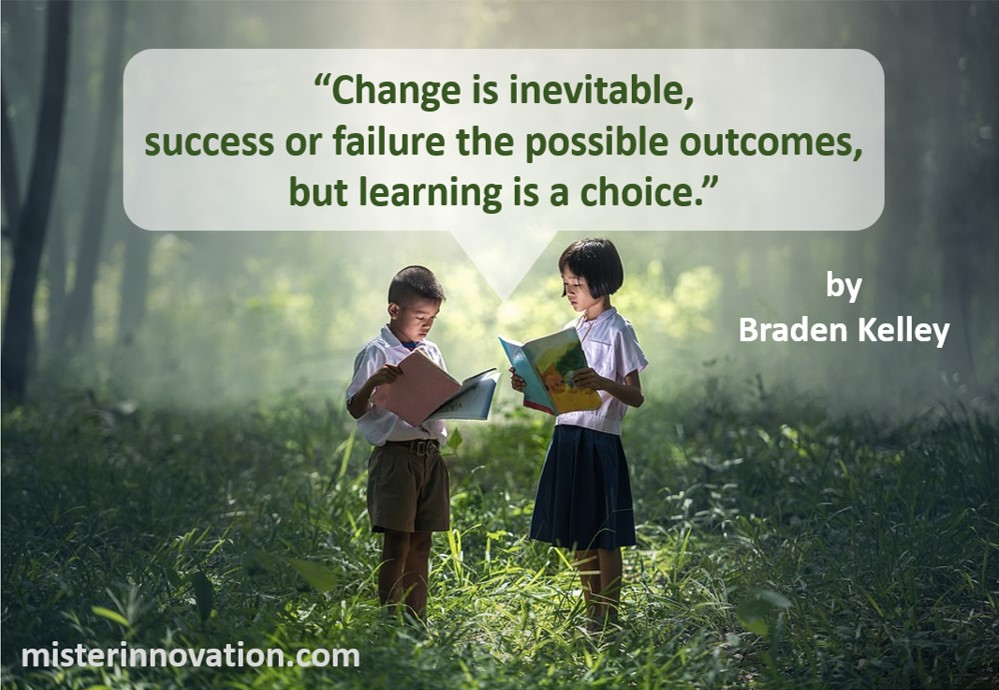

 According to multiple sources, including McKinsey, 70% of change efforts fail. The reason many change efforts fail is that they often lack a clear plan.
According to multiple sources, including McKinsey, 70% of change efforts fail. The reason many change efforts fail is that they often lack a clear plan.